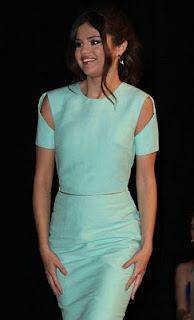Spring is just around the corner — and so is the cleaning associated with it. This year, rather than merely dusting and organizing your possessions, take stock of what you have and consider selling what you don’t need.
“I would estimate people have between $3,000 and $5,000 worth of stuff in their house that they’re not using,” said Gail McMeekin, author of “The Power of Positive Choices: Adding and Subtracting Your Way to a Great Life.”
The easiest way to start is by breaking down what can be sold in four major rooms — the living room, the kitchen, the bedroom and the attic or garage.
Living Room
Many of us inherit furniture from our parents or grandparents, and it clutters our living spaces. “We don’t get rid of such items because we feel ashamed,” says Debbie Mandel, stress-management specialist and author of ” Product Details
Addicted to Stress: A Woman's 7 Step Program to Reclaim Joy and Spontaneity in Life.” She recommends taking a picture of heirlooms before you sell them, so you keep the memory without having the furniture crowd your house.
When selling furniture, Julie Kearns, founder of Junket: Tossed & Found, a vintage resale shop, recommends checking the item's bottom and back for brand or manufacturers' markings. Once you have the name, she says, research how much the pieces may be worth on eBay and Craigslist. “It helps to figure out if there's already a market for the item,” she says.
Unless you already have an established reputation, however, Kearns suggests “using Yelp.com to identify business owners with a positive reputation in the marketplace” and to consider having a consignment or another shop sell the items for you.
Other items that Kearns suggests might be worth money include lampshades, especially ones that are from the 1970s or earlier, and mantel clocks.Condition and design are big factors here. A clean shade, preferably with a makers' mark, in excellent condition (without smoke/staining/etc.) can fetch $25-30 (more, if it's extra funky or space age), Kearns says.
Mandel adds that many people keep books even when they never intend to read them again. She suggests bundling them and selling them in bulk to a library or an online resale site.
Kitchen
Many of us have appliances that we bought with the best intentions — the massive juicer, the still-in-the-box bread maker — but never use. “Start by getting rid of old appliances that just take up space,” says McMeekin.
Appliances will fetch some decent cash, especially if they're in mint condition. But the objects that will sell for the most money are old dishes and glassware, especially from the 1930s or 1940s.
Silver-plate silverware also can be sold for surprisingly high prices. “Check the maker’s name on the back,” says Kearns. The name will be useful for determining whether or not there's already a market for the item. Once you have it, Kearns recommends doing an advanced search on eBay, and looking at the completed listings — items already sold — so that you can competitively price your own items.
One great site for buying and reselling china is Replacements LTD, which specializes in dinnerware, glassware, collectibles, and china and crystal.
Bedroom
The most obvious item to sell in bedrooms is old clothing and jewelry, which can be easily offloaded at consignment shops. Kearns recommends bundling clothing together — even if it is ripped or has stains — and selling it in bulk on eBay. “As long as you’re clear on the condition and quality, people will buy it,” she says. This works especially well with baby clothing, which children grow out of quickly.
Old clothes and jewelry that aren't name brands? The older, the better. A high quality 60s era dress without a pedigree could earn a seller $15-30 or more. Day dresses from the 1940s are easily worth $50, if they're in great shape. Eighties clothing can sell nicely, but must be a common size and very reminiscent of the decade: $5-15 per piece is typical, though some will fetch far more, Kearns says.
Other items that Kearns says sell well are vintage linens — Bates and Chanel are two brands that fetch especially high prices — as well as old sewing supplies, which often are made in colors or materials that have been discontinued.
The real money item in the bedroom, however, is the alarm clock. “Look for items from the 1950s, ‘60s or ‘70s with brand names like Westclox, General Electric, Braun and Bulova,” suggests Linda Abrams, author of “Collecting Under the Radar: Tomorrow's Antiques,” and an expert in American collectibles. “Colorful cases with crazy dials or fun Disney figures are especially valuable.”
Abrams says that clocks with space-age themes can fetch up to $100; alarm clocks with unusual alarms from the ‘50s can bring in up to $150; and cartoon-decorated alarm clocks up to $30.



















.jpg)


.jpg)

















.jpg)
.jpg)















